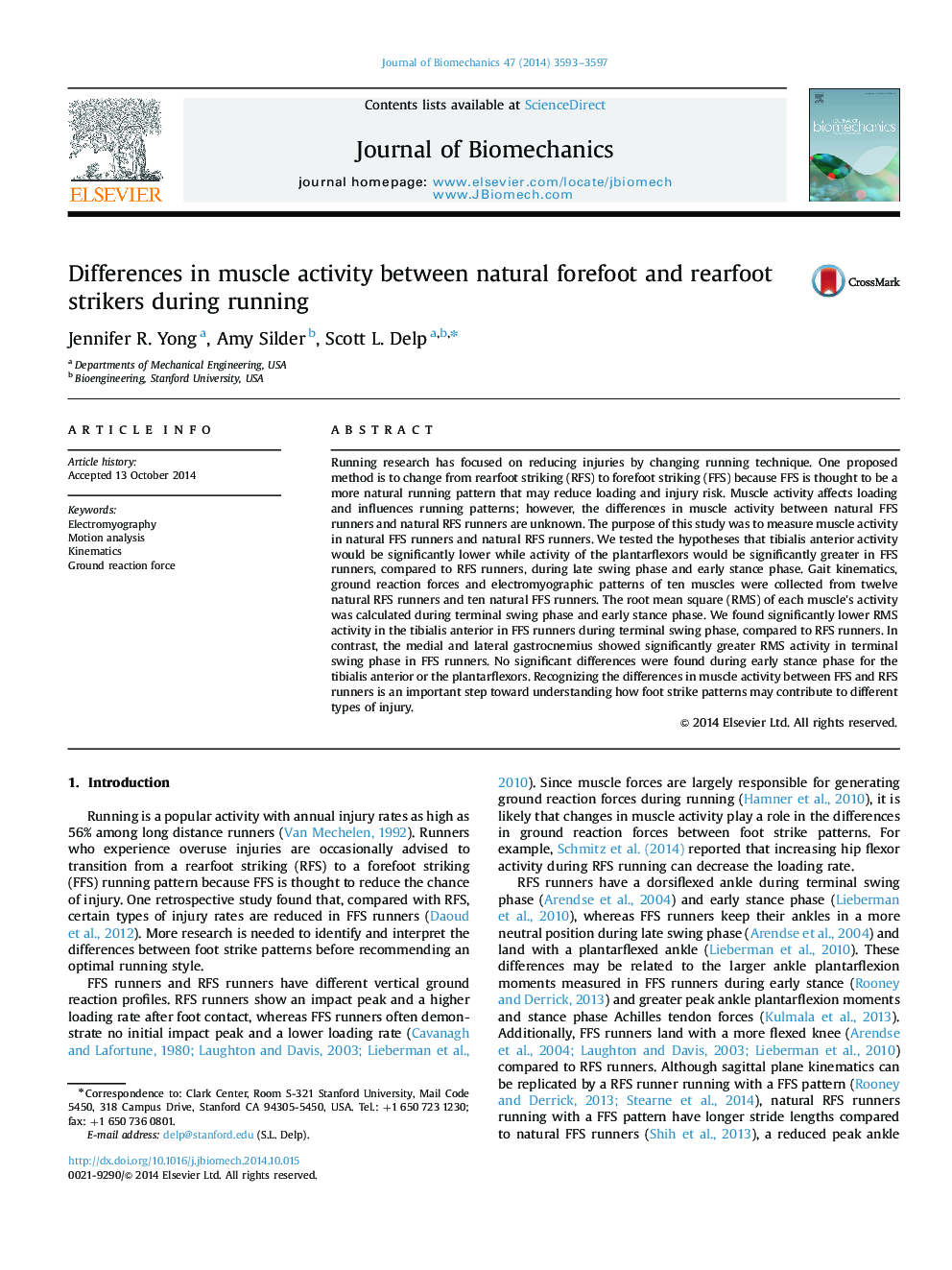| Article ID | Journal | Published Year | Pages | File Type |
|---|---|---|---|---|
| 872021 | Journal of Biomechanics | 2014 | 5 Pages |
Running research has focused on reducing injuries by changing running technique. One proposed method is to change from rearfoot striking (RFS) to forefoot striking (FFS) because FFS is thought to be a more natural running pattern that may reduce loading and injury risk. Muscle activity affects loading and influences running patterns; however, the differences in muscle activity between natural FFS runners and natural RFS runners are unknown. The purpose of this study was to measure muscle activity in natural FFS runners and natural RFS runners. We tested the hypotheses that tibialis anterior activity would be significantly lower while activity of the plantarflexors would be significantly greater in FFS runners, compared to RFS runners, during late swing phase and early stance phase. Gait kinematics, ground reaction forces and electromyographic patterns of ten muscles were collected from twelve natural RFS runners and ten natural FFS runners. The root mean square (RMS) of each muscle׳s activity was calculated during terminal swing phase and early stance phase. We found significantly lower RMS activity in the tibialis anterior in FFS runners during terminal swing phase, compared to RFS runners. In contrast, the medial and lateral gastrocnemius showed significantly greater RMS activity in terminal swing phase in FFS runners. No significant differences were found during early stance phase for the tibialis anterior or the plantarflexors. Recognizing the differences in muscle activity between FFS and RFS runners is an important step toward understanding how foot strike patterns may contribute to different types of injury.
